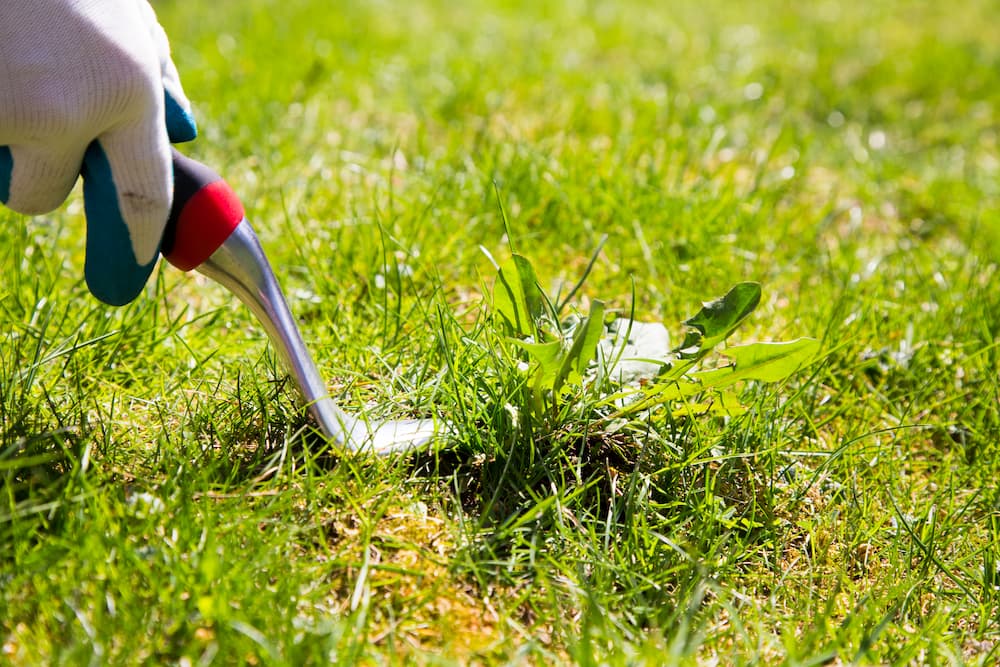Updated:February28,2024 Here at NHG, we know you love pretty blooms that are easy to plant,…
The ABC’s of Controlling Weeds in Your Landscape

Among things that avid gardeners enjoy, managing weeds in lawns and flowerbeds is not on the list. But remembering and applying three simple practices will get weeds under control and create more time for gardeners to enjoy their own great outdoors.
How to Prevent Weeds From Growing
Advance plan. Applying a pre-emergent product before weed seeds can germinate is a proactive step to prevent the seeds of weeds from germinating. In Texas, we have “cool-season” and “warm-season” plants like herbs and vegetable, and this true for weeds, too. Perhaps the biggest weed worry of gardeners is the annual cool-season broadleaf weeds like dandelions, henbit, and chickweed that emerge early each spring (thus “cool season”). These weeds sprout in the fall then bloom in the spring, so a pre-emergent must be applied between the last week of August and the first week of September prior to germination. If flowering weeds do emerge in the spring, mowing and discarding the cuttings before the seeds within the flowers mature will stop next year’s crop of cool-season weeds. There are also cool-season weedy grasses like rescuegrass and bluegrass, and there are pre-emergents targeted to these as well; note that you have to apply separately because the application amounts vary by product. Crabgrass is the predominant warm-season grass; apply a targeted crabgrass killer two weeks before the predicated last freeze, then – because the summer growing season in Texas is so long – a second application three months later. Do not apply pre-emergents to newly-installed lawns, and follow directions about using these products around trees and shrubs.
Grow Healthy Soil
Build better soil. Weeds thrive in poor conditions: image the weeds that flourish in disturbed soils on the side of state highways. Adding organic matter like compost and nutrients in the form of root stimulator and fertilizer, improving drainage, then maintaining that soil quality will not only deter weeds but will facilitate the healthy growth and spreading of the plants you’ve selected for the landscape and cut down on open spaces where weeds love to encroach.
Mulch for a Weed Free Garden
Cover up. One of the most important resources for any garden – and not just for weed control – is mulch. A generous layer of mulch does cover that exposed soil where weed seeds want to sprout, and can even smother seedlings of newly-sprouted weeds. It also helps hold in moisture, regulates soil temperatures, and slowly releases nutrients into the soil as it breaks down, thus promoting healthy growth. In the alkaline soils of the Metroplex, pine straw and pine bark mulches can help decrease the pH of the soil for acid-loving plants like azaleas.
Take Control of Your Garden
Most things in life aren’t as simple as A-B-C: gardening certainly isn’t. But incorporating advance planning for weed control, building better soils to help the plants you do want to flourish, and covering with mulch to protect your garden can help gardeners take back their lawns and their joy in gardening.

